Each month, Bob profiles an exceptional mobile photographer currently producing notable work across a variety of subjects and employing a broad range of techniques. Some will be well known within the mobile photography world (exhibiting and selling their work), and others are gifted aficionados of the craft.
This month, Bob interviews Eliza Tsitsimeaua-Badoiu – a Romanian artist/photographer who draws her inspiration entirely from within, beginning with an altered selfie, and seeking to express her feeling-of-the-moment as truly and clearly as possible. Eliza acknowledges no particular artistic model or genre, but seeks to “freeze moments and turn them into art.”
BW: Please share your personal and professional background, and how you came to develop an interest in photography and the iPhone as a camera.
ETB: On a formal, professional level, I am a foreign language teacher, based in Constanta, Romania. On a more personal level I share a sincere love affair towards the visual arts, using the new technological device of the iPhone to entirely shoot and process all of my artwork.
Going back in time, it all started in 2014 when I began experimenting with the mobile camera, first operating on Android, and by 2015 I had switched to the IOS system and since that time has enjoyed the amazingly artistic journey on which it has led me.
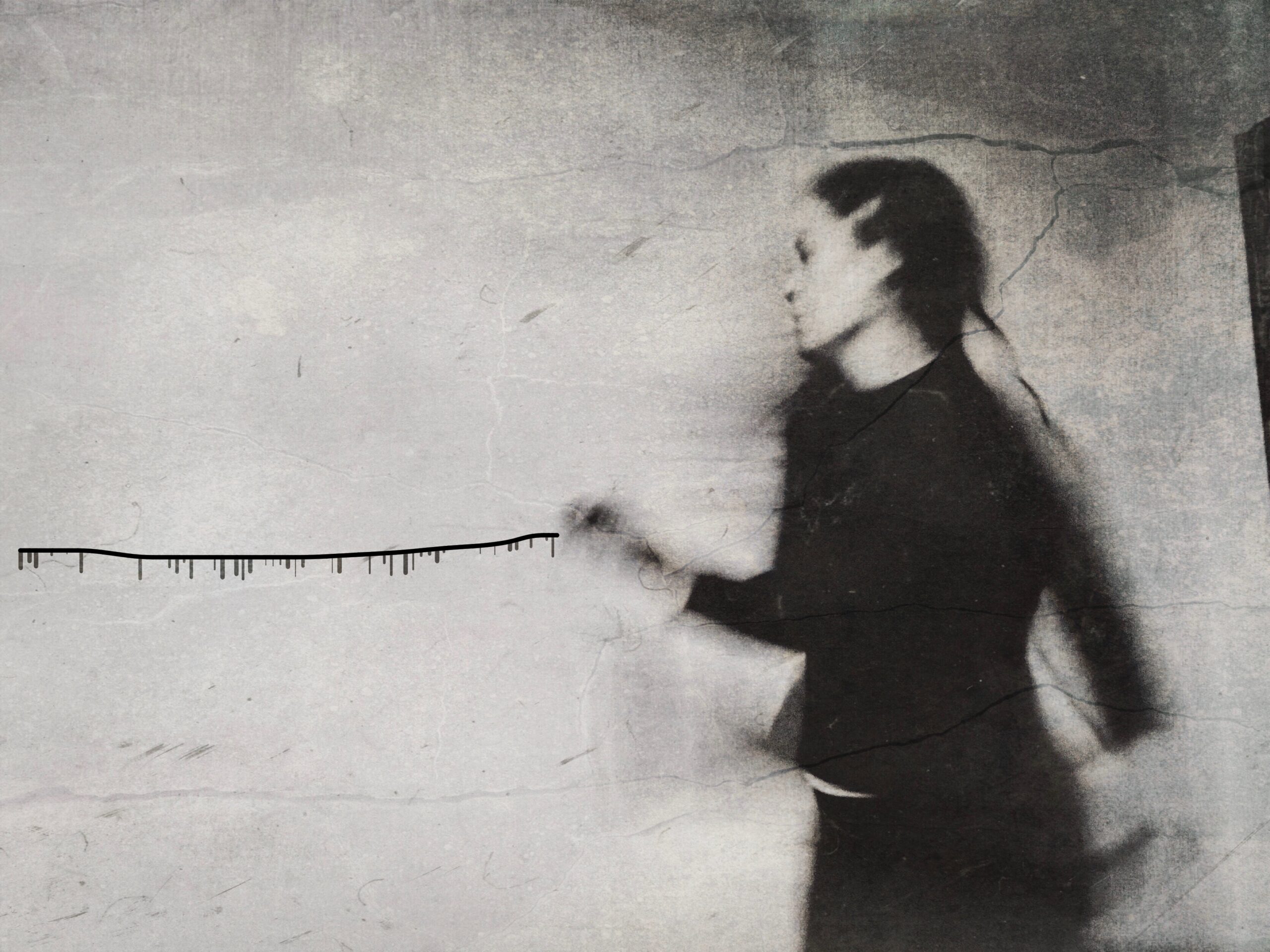
Captured in 2016, against my bedroom wall. It’s a “clean” shot where I only played with blur and motion to create the effect of the mind, registering a traumatic episode of feminine despair I was dealing with back at that time. It’s my quintessential signature noir shot.
BW: What inspires you?
ETB: For me, inspiration is a synonym for the moment itself. All moments randomly come and go and some of them are more charged than others in speaking to me. So, it is those moments I freeze and turn into art.
I almost entirely shoot self-portraits, so I guess the inspiration comes from somewhere within myself, coming to light in accordance with the moments and periods I experience in life. Once more, inspiration is the subconscious mind freed to manifest itself from the inside out from the enclosing form of the frames I shoot and later design.
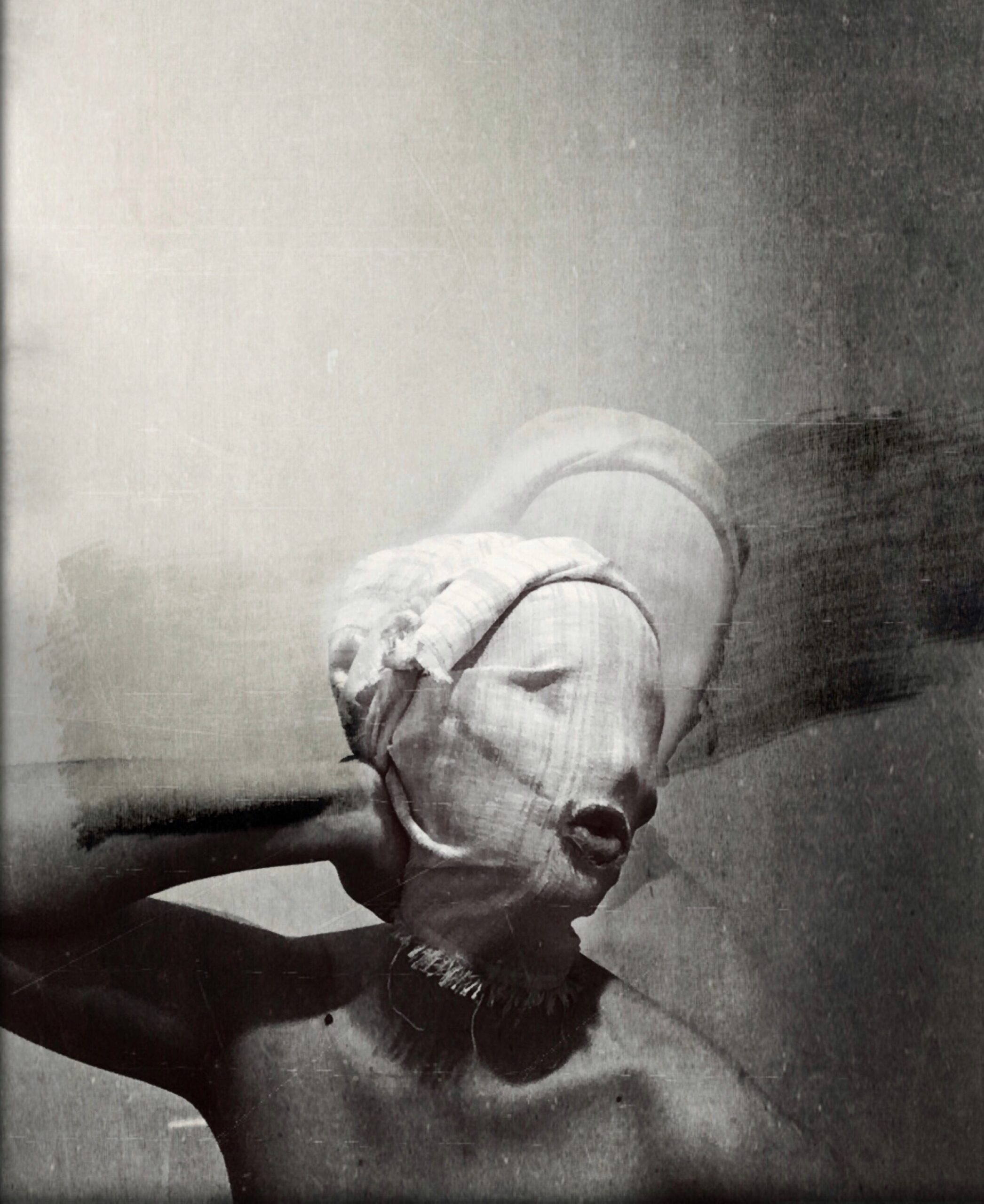
Self-portrait I took while placing a piece of old cloth over my face. Inspired by the literary artwork of Luigi Pirandello, wanting to deal again with the loss of identity and the annihilation of the original self that society and norms may sometimes impose on us. Manipulated in Pixelmator and Snapseed.
BW: How do you express your creativity?
ETB: The creativity behind each photographic frame comes about through the favored (might I say “flavored?”) edit I overlay upon the original image. Editing the images takes me to the imaginary world of possible fantasies I sometimes develop and live in – the process can be seen as a gateway to escape real-world reality.
It’s that place where the mind clears itself from the norms and strictures that our society imposes on us as human beings, and, in my case, as a woman – as souls.
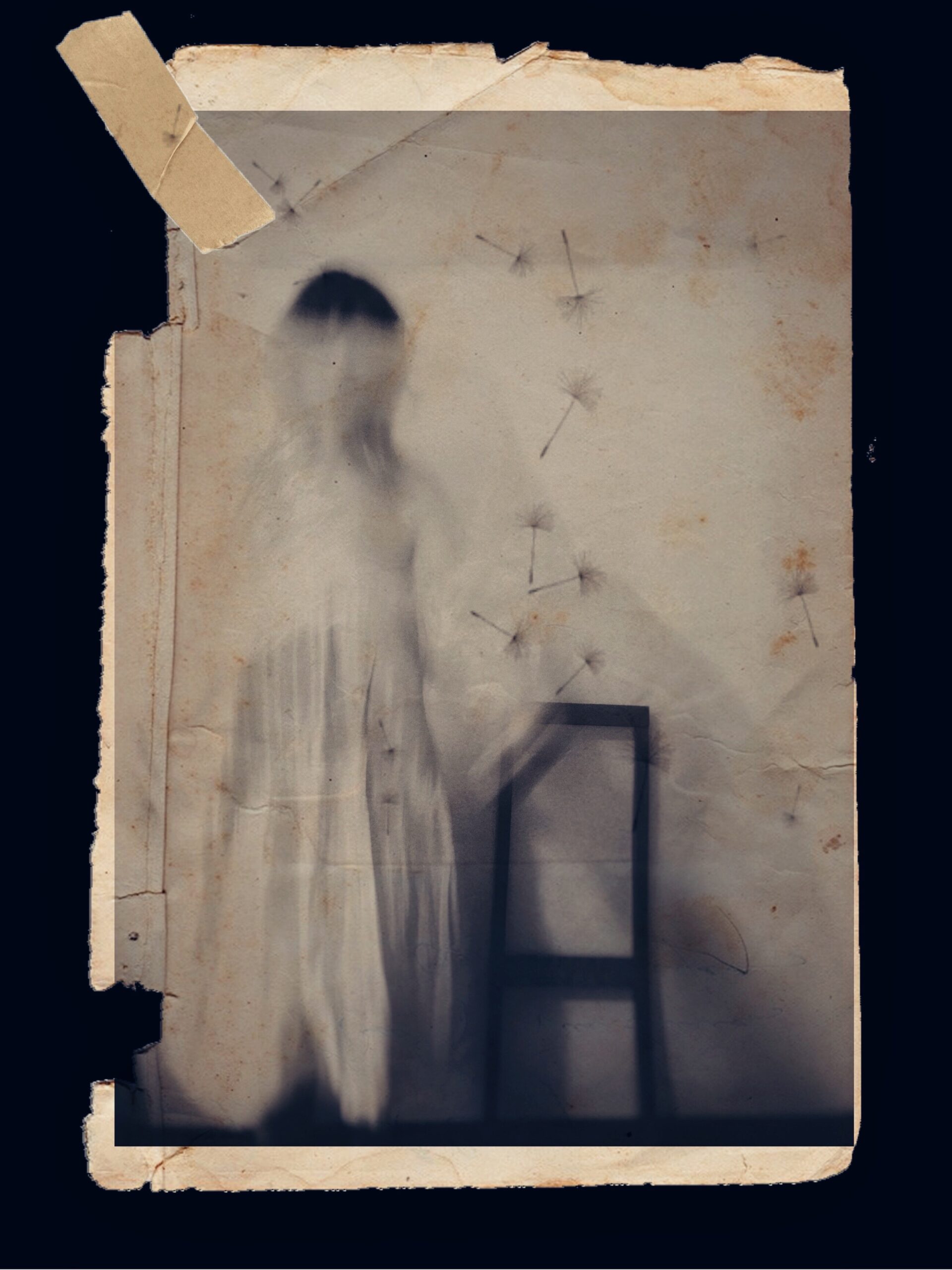
This is a selfie image I took in 2019, against my bedroom wall with the staged element of that broken chair, and playing with some veils in order to render a more ghostly atmosphere to the feel of it. I refined it and fixed it as a collage in PicsArt, adding another layer from a flowery shot I had. The final effect was achieved using an old frame glued onto another old piece of paper (as if someone has just found an old image from another space time dimension and pinned it there).
BW: Are there any specific design periods, photographers or artists who have an influence on your work?
ETB: As a self-taught mobile photographer, I have taken a really intuitive path (the inner one), one that I have followed since the very beginning. Though not reading much on photography and not really acquainted with the big names in photography, I can remember producing images and having people write me on social media platforms saying that my work resembles this style here, or that name there. It’s amusing for me to recall that I needed to Google the names and styles to be aware of what they were trying to say to me.
Of course, with the great array of social media platforms available, I see thousands of images that I love and could be inspirational or to which I can relate to in terms of visual style. But I strongly believe each visual artist leaves their own signature upon the artistry they produce and that everything comes from within as a manifestation of the self. After all, each artist has his or her own eye, and that is what photography is all about – that eye as the expression of the soul.
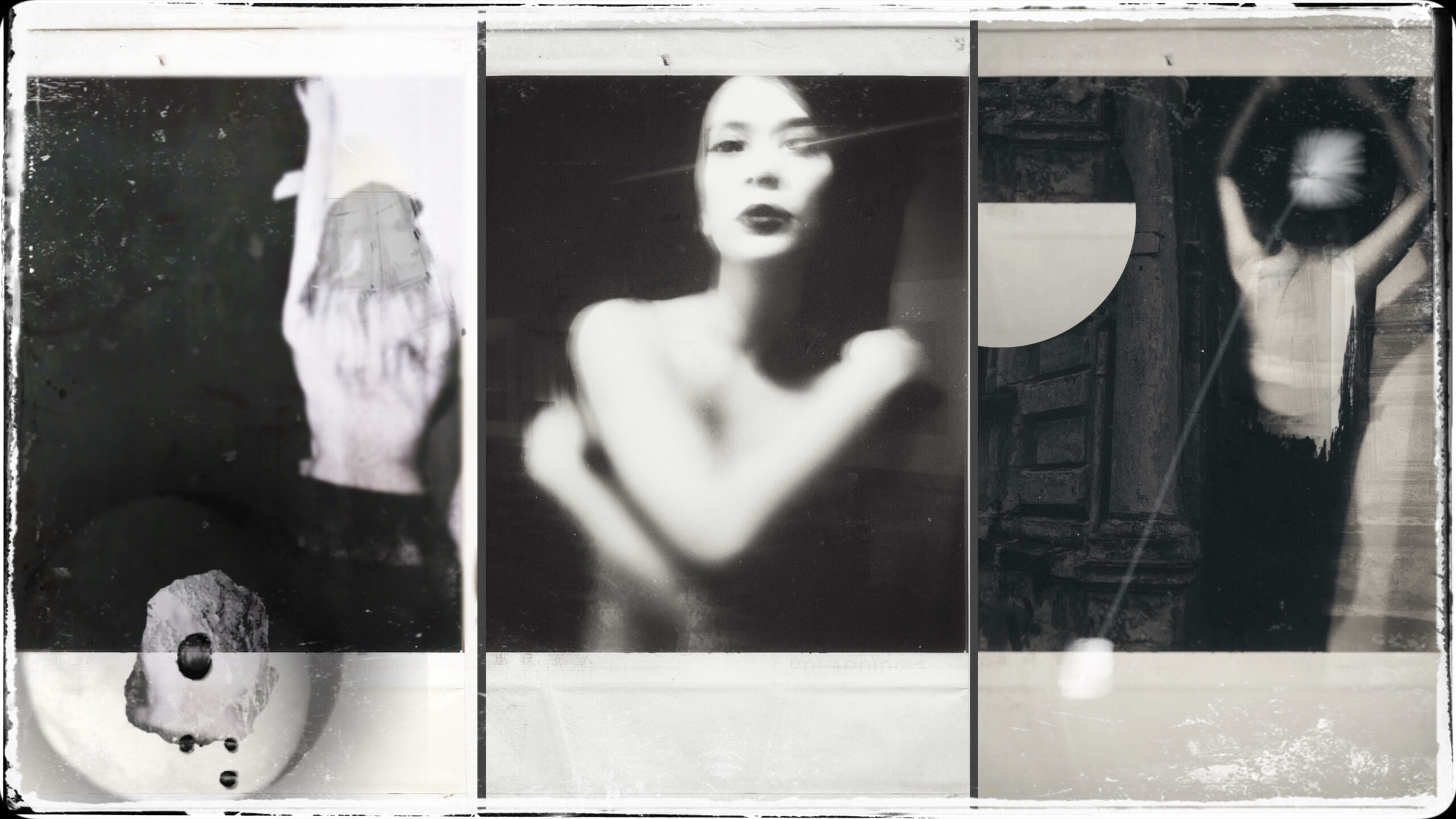
BW: What are you trying to communicate with your work?
ETB: My self-portraits are basically about different sensations and states of mind that I have experienced throughout time. Each frame links to a different moment I can still clearly associate with my memory. My images are to be seen as the feminine translation of various inner states; some are about my personal approach to different situations, others are about personal inner frustration (even traumatic episodes), many are just frames of illumination and feminine epiphany. In the end they are all to be regarded as the magically beautiful world of diverse sensation, that of being a woman and her psyche.
There is a reason for every photograph I have taken, and I usually have a clear memory of that moment that prompted me to take a given photograph, even years later.
In post processing, I’m trying to capture the feeling I had when I exposed the image, and communicate the beauty, the drama, the quality of light that prompted me to take the photo in the first place.
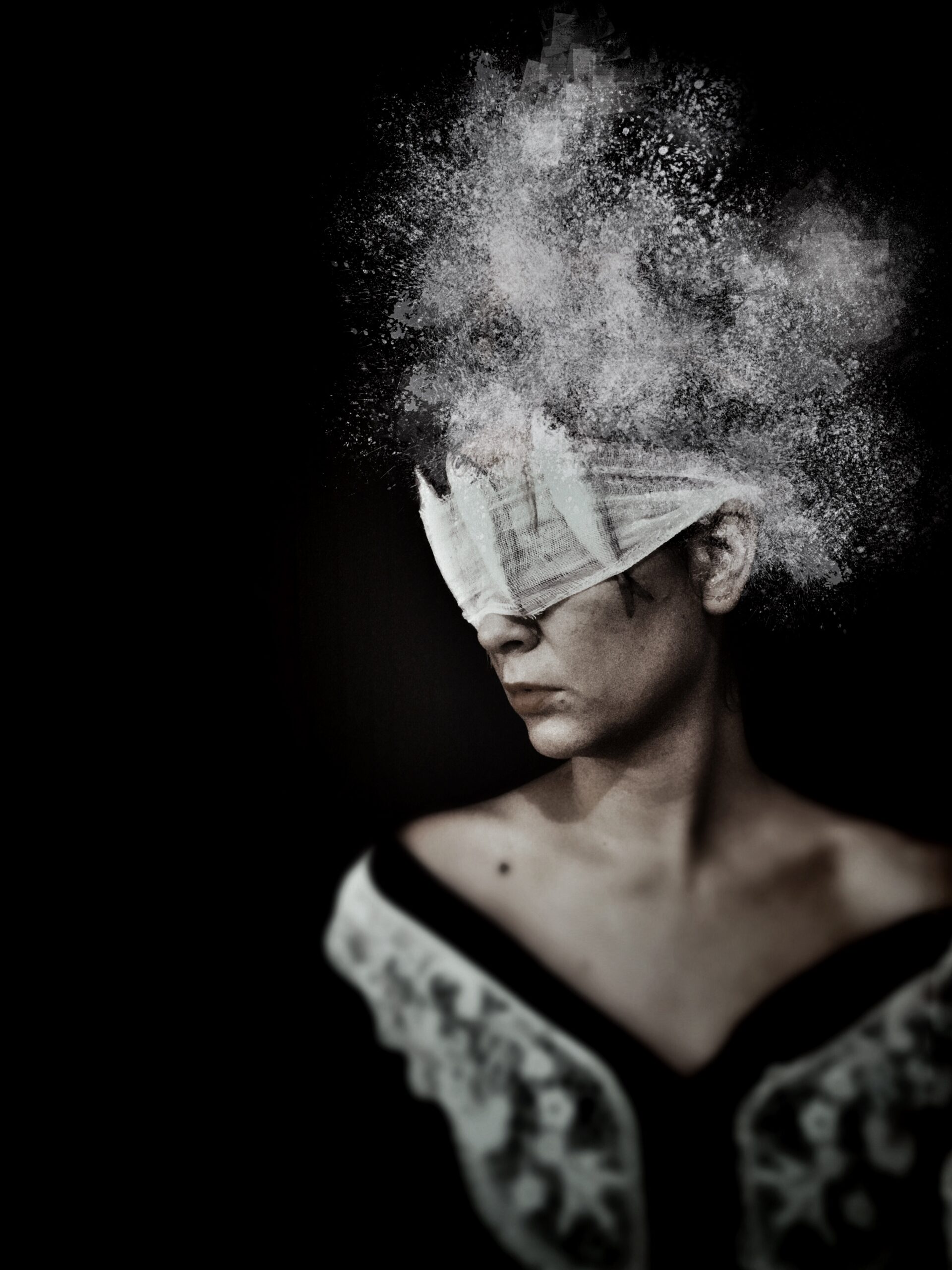
BW: How do you know when a work is finished?
ETB: Oh, I love this question! I personally believe that a frame is never entirely finished nor completed. Why so? Because I see the initial shot as the vast, potentially infinite path you can embark on when starting the editing process.
I often have several edits upon the same image that could be slightly different from one another in terms of the elements chosen or the tones. I’m sometimes uncertain myself whether it works better in color or in monochrome, because each step layered on during the editing process brings the photo to another visual dimension.
Still, the magic always happens and intuition always speaks to me in the end and whispers into my ear the ideal completion point to the created frame.
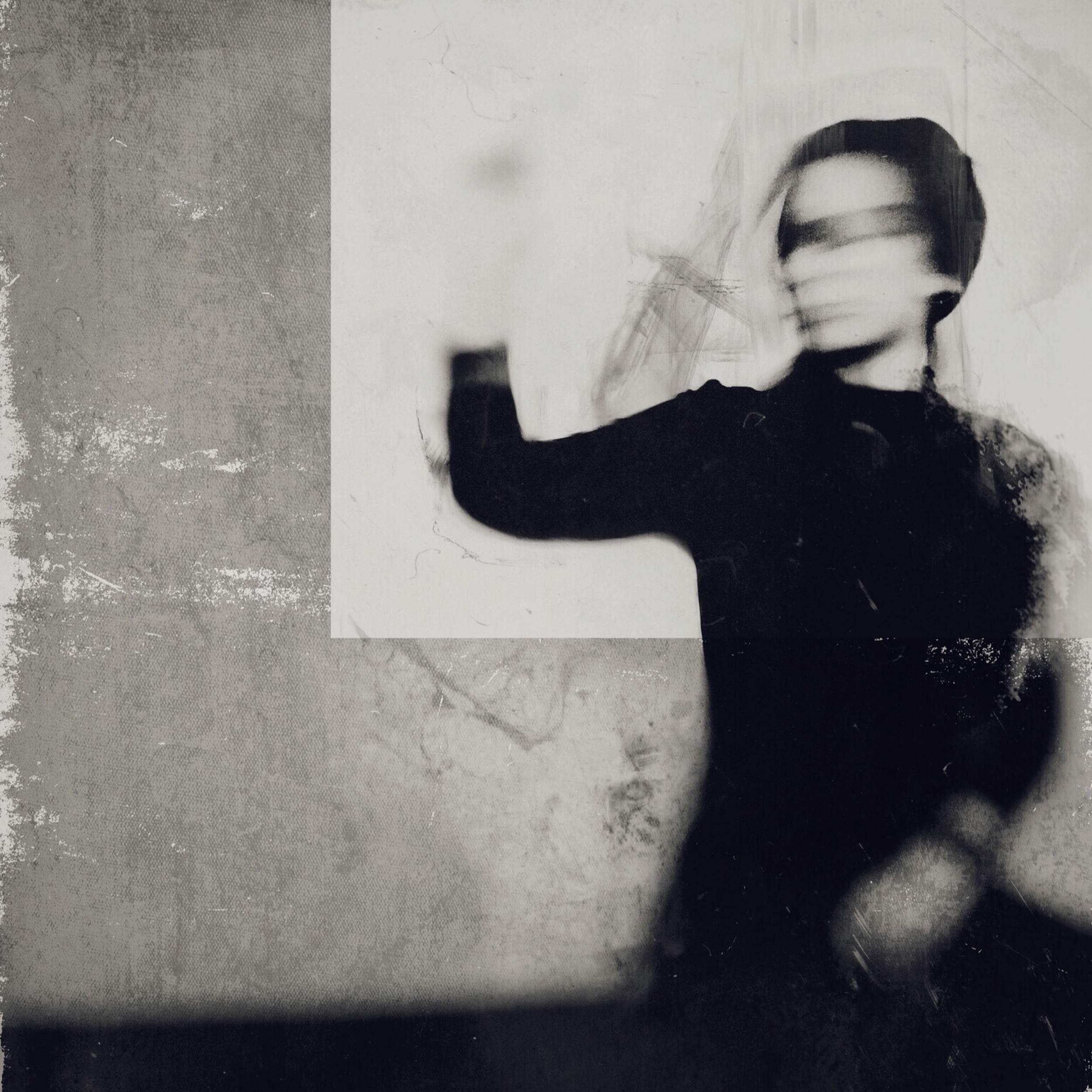
BW: What would you call your style of photography? It brings to mind Gothic and noir.
ETB: Yes, my style definitely belongs to the dark art register cause I love to use a lot of monochrome, love using the blur and motion tools so that the images gets closer to the subterranean, more introspectively-oriented layer of the unconscious mind.
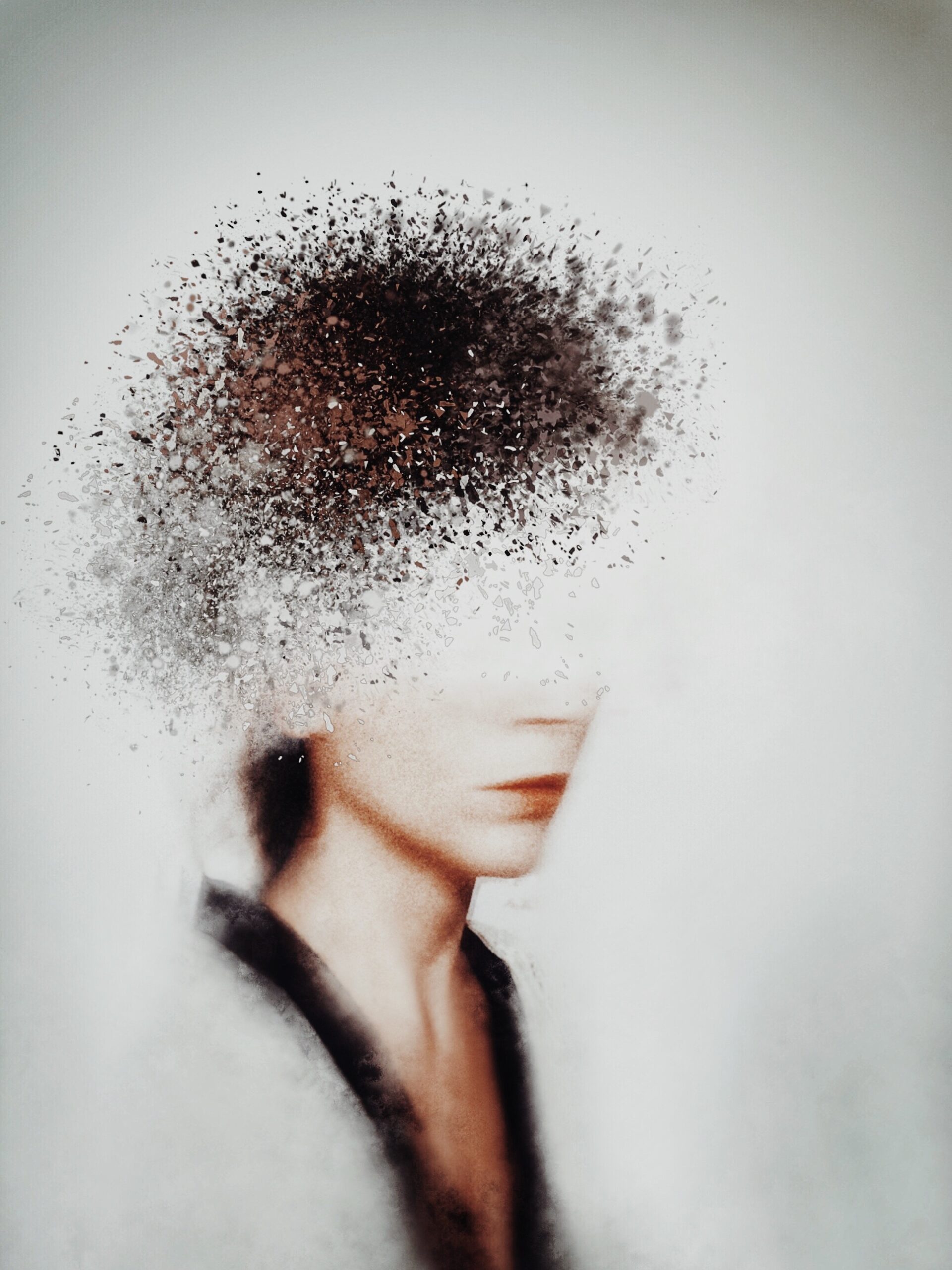
Self-portrait where the emphasis of the edit is rendered onto the loss of identity in the subject presented. The splash above and around the head area intended to underline a continuous flow of the mind, gathering maybe mixed emotions the character is going through.
I love noir and that comes back from my inspiration 90’s grunge, rock and alternative musical scene videos, or visuals I grew up with in iconic magazines.
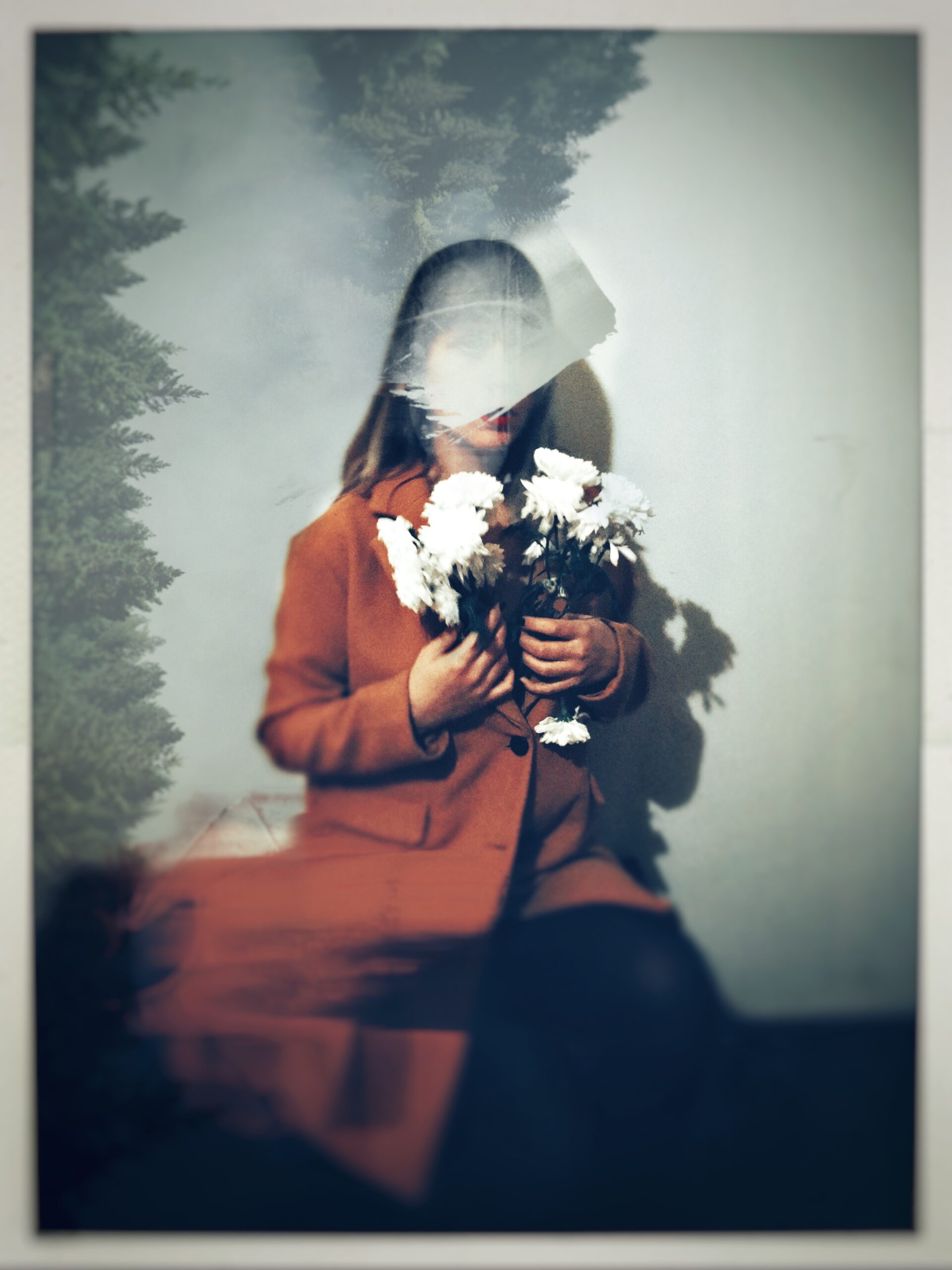
BW: What prompted your decision to concentrate most of your photography on self-portraits?
ETB: I guess because, as I stated before, it is best when you document yourself, your sensations, your fears and hopes – relying entirely upon your own emotional world. The story is yours. There is a higher degree of credibility when the subject uses her or his own experience as the means of expression.
You could say my images represent a kind of a feedback loop, in the sense that the finished images somehow augment and add to my life experience after their creation, much as they reflect it beforehand.
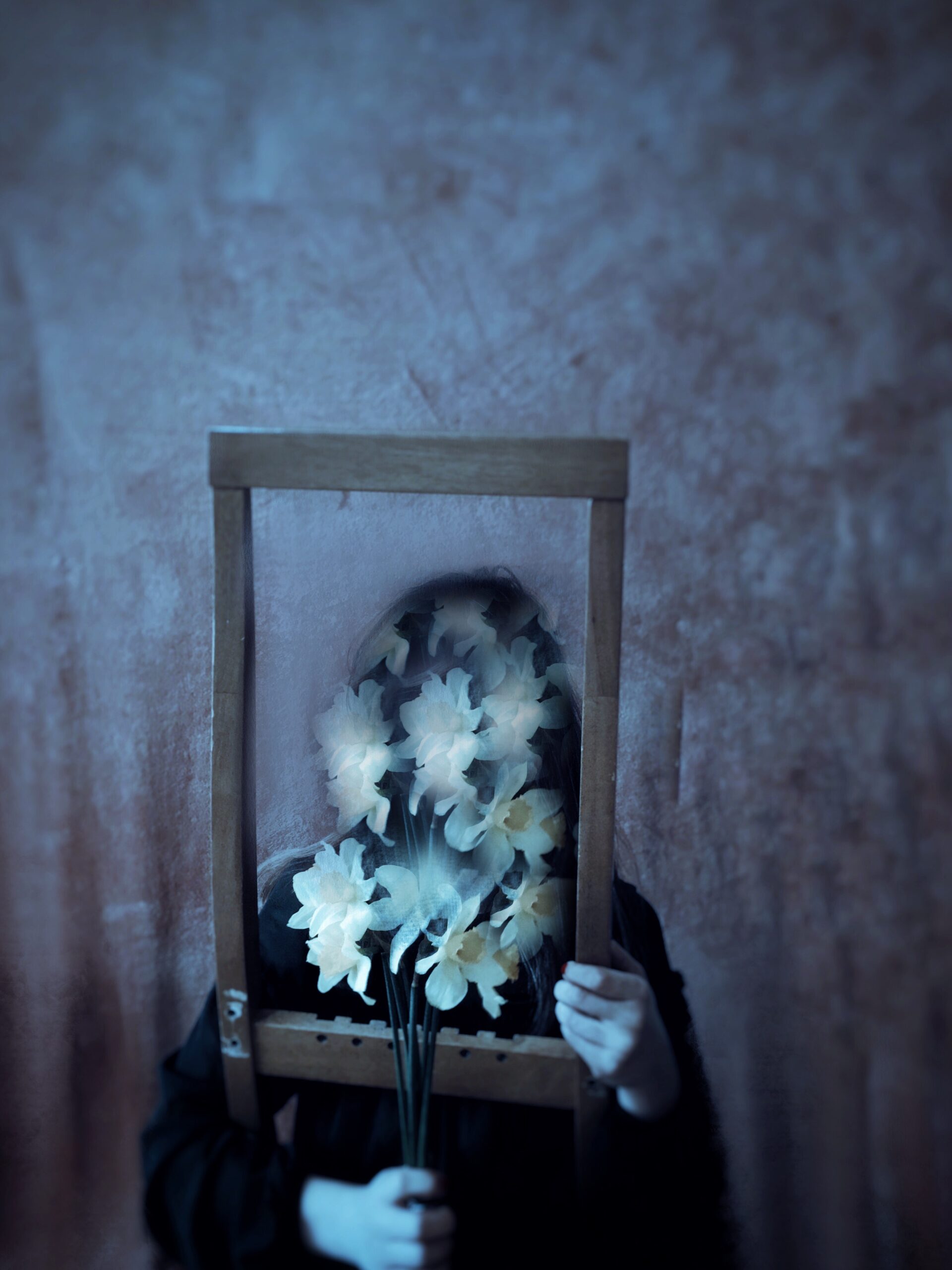
Self-portrait processed in Pixelmator and Snapseed. I used the frame of the chair in order to create a frame-within-a-frame impression where the story could be infinitely rendered and told. I played a lot with blur and with the flowers I bought from the local market that very day to create a more of a dreamy, mysterious feminine effect connecting to the mind and inner layers of the feminine soul.
BW: How do you go about finding your ideas?
ETB: I never look for ideas and inspiration – they find me freely on their own. I just respond to what comes to me; that which surrounds me. So, it all comes about in a spontaneous, miraculous way – for me, it’s simply a matter of being in the moment and being open to whatever comes.

BW: How do you set up a scene? Do you bring your own props to the scene, find them there and move them into position, or superimpose them after the fact using apps?
ETB: The scene is a room in my home, mostly utilizing the walls – I shoot myself against this background. I sometimes move the position of certain things or I create the background of the story I feel myself immersed in.
Some images I also manipulate and overlay with different outdoor backgrounds that would fit into the story. Whenever shooting a selfie I most commonly hold the camera in my hand or if I’m into a quick, unexpected moment of inspiration I’ll just prop the iPhone on some piece of furniture and take the snapshot. But generally speaking, I take my indoor selfies using a tripod.
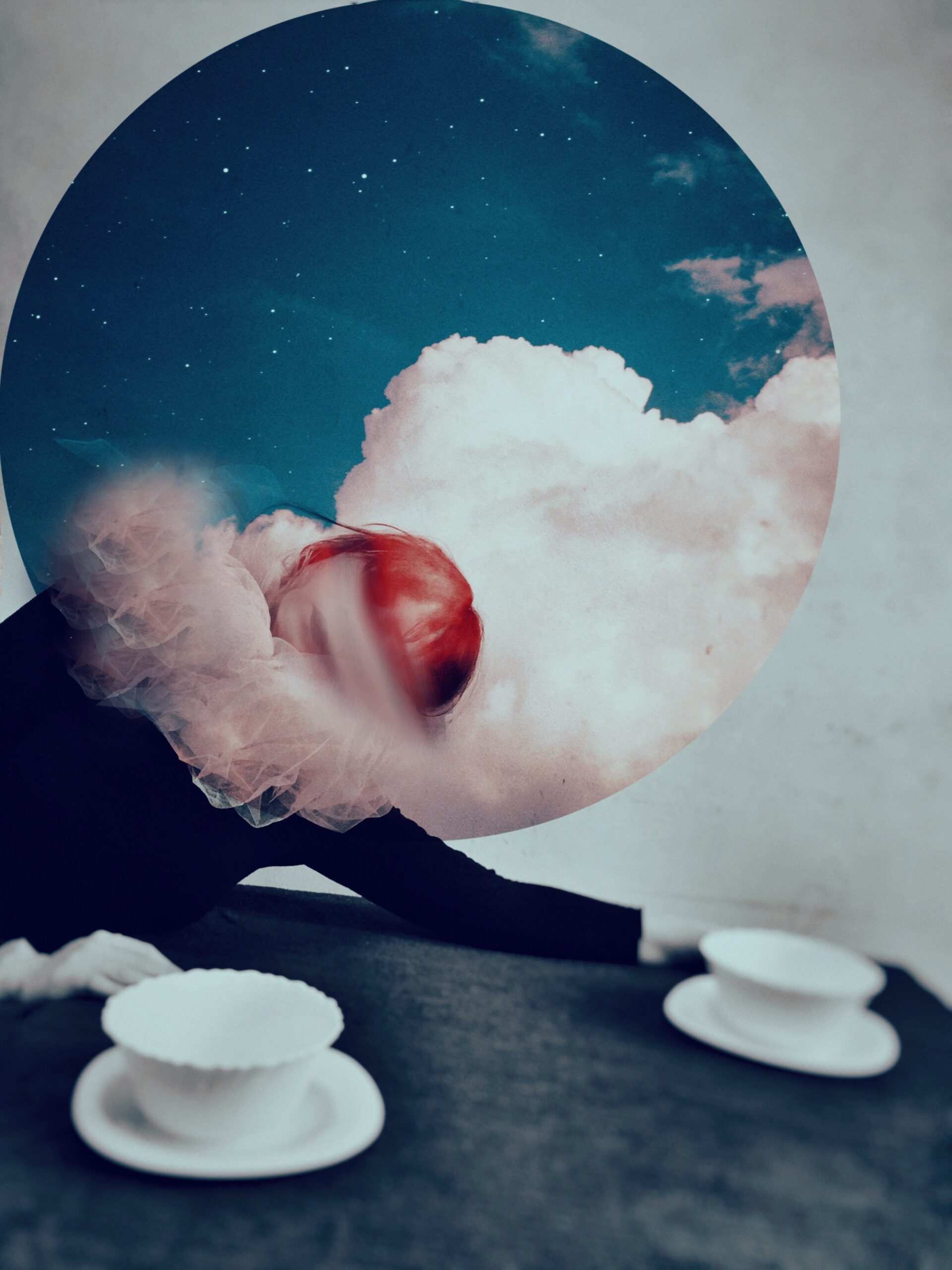
This image is dear to me; it’s a self-portrait I took in my kitchen by setting the scene around my kitchen table. Then I played in PicsArt to add the surreal element of the cloud and backstage foreground window and used some brushes in Pixelmator to play with blur. I fixed color both in Pixelmator and Snapseed.
BW: What iPhone apps do you use in your work? Any on the desktop?
ETB: All that I operate on, since 2015, is the iOS system (mobile only), never on the desktop. The editing apps that I use most often are: Snapseed for fixing mood by rendering tones and colors, PicsArt for collages and some additional elements I placed into the frame, iColorama for the edit and refinement of color, texture, pattern, etc., Mextures for the textures, sometimes Hipstamatic (especially for the more sepia filters), and Pixelmator (if I want to play with brushes and blur).
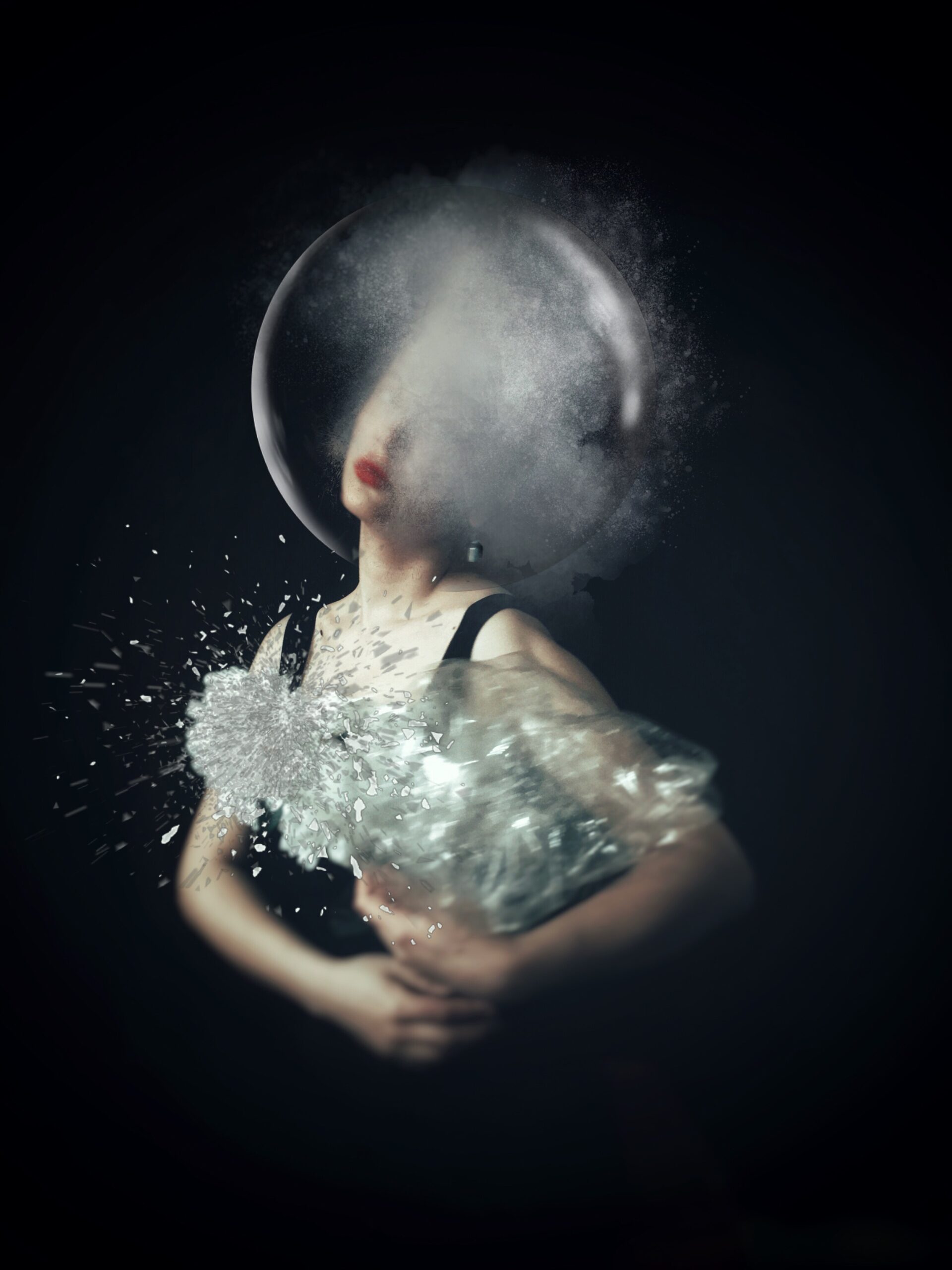
BW: What kinds of creative patterns, routine or rituals do you have?
ETB: Each shot takes its own path through the editing process – it depends on my mood, or the message I want to convey based on the initial shot. For the most part, I play around with the color or tones and then I make changes in terms of blurring and surreal elements, next I typically play with brushes and then move on to final touches for colors, tones, shades, luminosity.
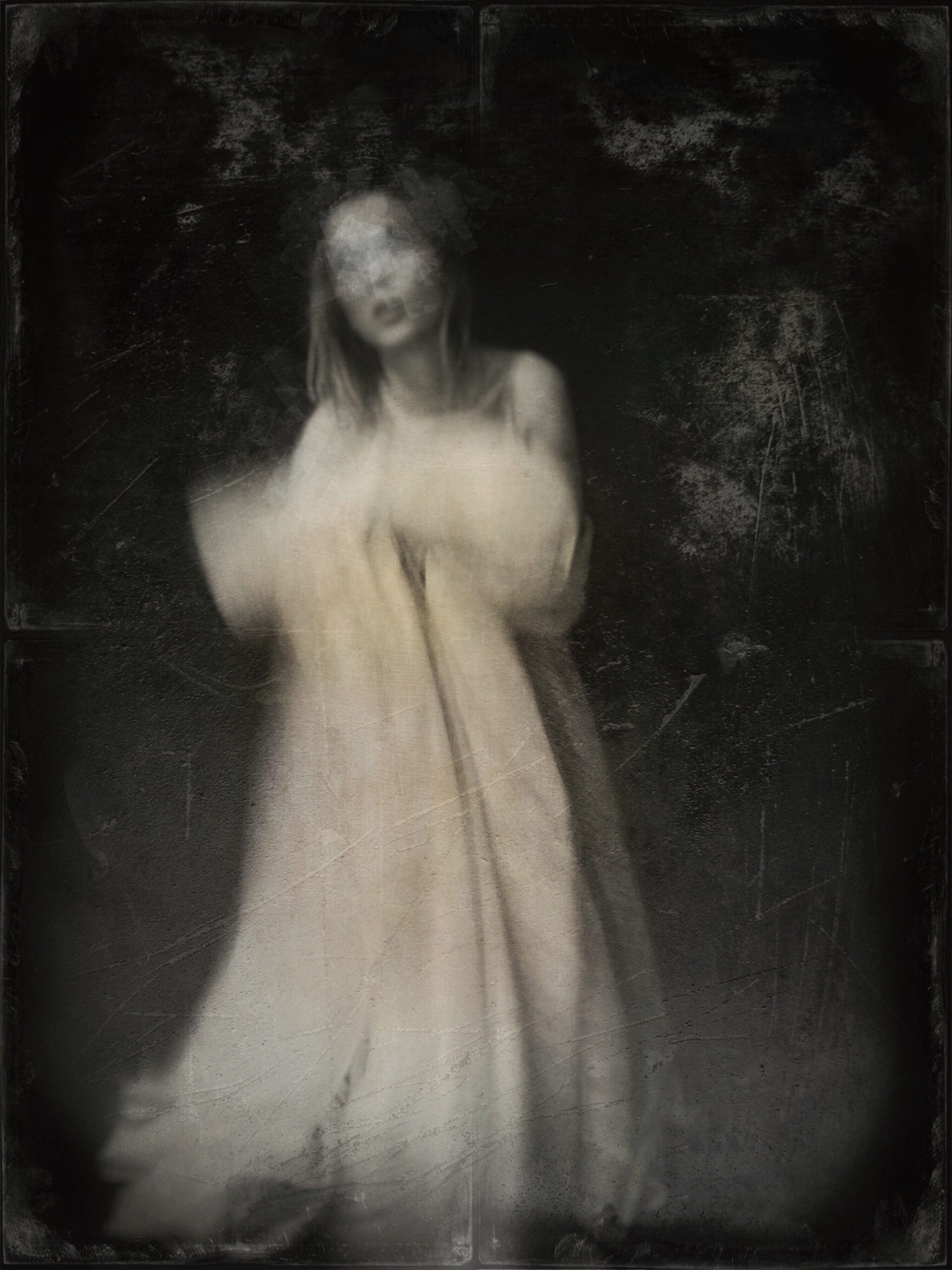
BW: What advice would you have for someone aspiring to do this type of self-portraiture?
ETB: As is always the case with providing advice, we are all different, so the things that might work for me, won’t work for someone else. So, the only piece of advice is to always stay open to your inner flow and always listen to your intuitive soul and tell a sincere story – that is the real YOU.
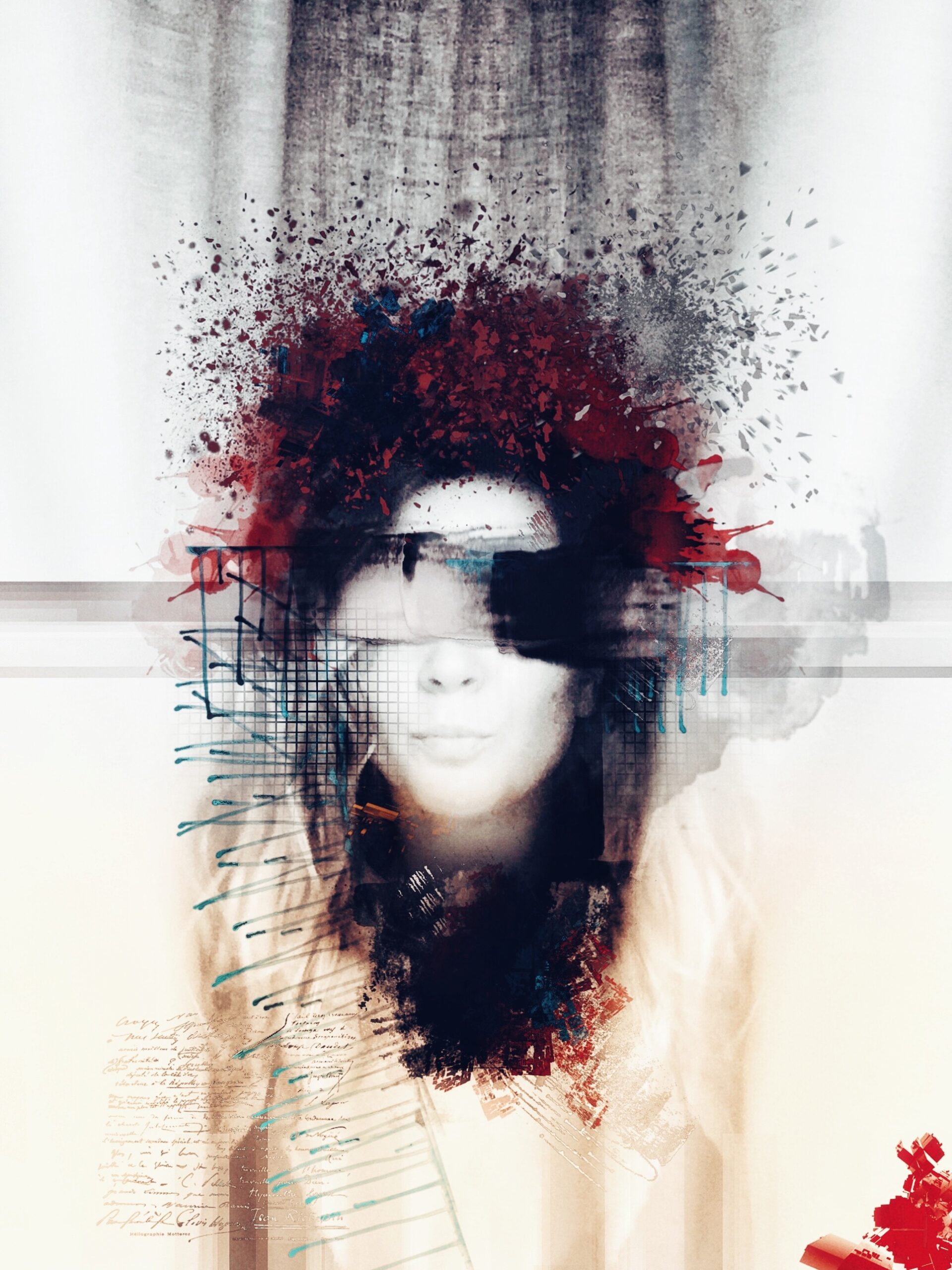
ELIZA TSITSIMEAUA-BADOIU
ABOUT THE INTERVIEWER
Bob Weil is a former marketing exec and practicing mixed media digital pictorialist living in Omaha, Nebraska. He has won numerous awards for his work and has exhibited in New York, Los Angeles, Canada, Italy and Portugal. He is a published author and teacher on digital art subjects with 2,400 students in 52 countries. Bob co-authored The Art of iPhone Photography with Nicki Fitz-Gerald for Rocky Nook Photography Books.





Rita Long
July 28, 2022 at 21:50
Wow a modern day Francesca Woodman ❤️
Bob Weil
July 29, 2022 at 00:38
I know! Isn’t her work amazing? And to think it’s all done on an iPhone (which is of course tangential to whether the work is good – as it should be). I choose artists to interview first of all based on the exceptional nature of the work. Maybe in a few years we don’t even need to mention how it was created. (Actually, I’m there now, but it is a relevant differentiator to lower the resistance to the creative platform.)
Ted Gordon
July 28, 2022 at 22:30
Wonderful, wonderful, wonderful … wonder full <3
Bob Weil
July 30, 2022 at 04:01
Thank you for the superlatives, Ted!
Gökhan Kayal
July 29, 2022 at 08:28
What an amazing artwork. Chapeau! I consider that the tools used to create all these fantastic images are not a factor contributing to the pleasure of viewing the end result but makes the work itself and the background story of their creation even more amazing.
Bob Weil
July 30, 2022 at 04:09
Absolutely, Gökhan – at the end of the day, it’s not about the tools. Does the work move us?
T20 Win Support
March 31, 2025 at 15:09
This interview offers such a fascinating glimpse into Eliza Tsitsimeaua-Badoiu’s unique perspective on photography. Her ability to explore the intricacies of the “dark register” is truly captivating, and I love how she challenges the conventional boundaries of visual storytelling. It’s inspiring to see an artist so dedicated to exposing the unseen aspects of life through their work. Thank you, Bob Weil, for sharing this insightful conversation!